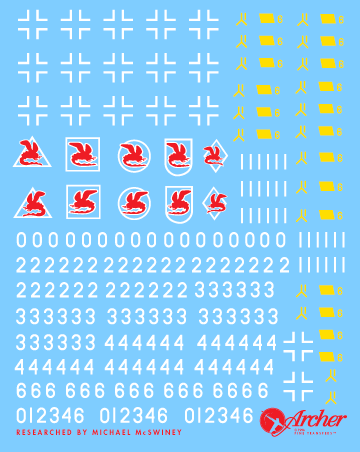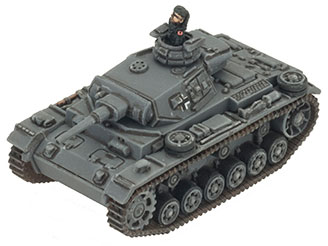In the late 1980's I was just graduating high school and moving on to college. I'd built model kits since I was about six - mostly the standard gamut of cars, aircraft, and the odd space or sci-fi kit. I'd seen kits of other subjects out there, but I'd never given them a heck of a lot of thought. That all changed around 1988-9 when I got my hands on an issue of Finescale Modeler magazine that detailed simple ways to add tarps, bedrolls, and all of the various gubbins seen on a tank that was in action. I promptly went out and picked up my first tank kit (the venerable 1970's vintage Tamiya King Tiger) and went to work. I was hooked immediately, and as they say, when it comes to tank modeling, I've never gone back.
Fast forward a couple of years and I'm introduced to the International Plastic Modeler's Society. Not only are these guys supremely talented builders, but they had REFERENCES too! Granted, by today's standards a lot of the references available at this time had several gaps and inaccuracies and have been superseded by more modern books, but this was my first introduction to moving beyond a basic kit and putting a tank into a specific time and place. I was gifted some basic armor references, including the original Panzer Colors 1 and 2. While considered authoritative in their day, that day has long past and the books are now fairly notorious (especially the third volume) for containing some fairly glaring errors.
Despite the issues, there are some excellent photos in the work, and a spread of images on page 30 of Panzer Colors 2 always struck my fancy. Identified in the work as Panzer III Ausf J tanks of Panzer Regiment 3, 2. Panzer-Division in the Soviet Union, the vehicles have a distinctive (presumably) red serpent insignia on the turret surrounded by one of several geometric shapes. The date of the photographs is not given in the caption, but a later color plate of one of the vehicles gives the date as 1942. I'd always wanted to build a 1/35th scale model of the vehicle, but lacked both the appropriate kit and the appropriate markings.
By the mid 1990's, resin kits were becoming more common, and covered a variety of sources which had not been well covered by the major manufacturers to that point. However, times were changing and DML / Dragon Models began to release affordable kits in plastic covering subjects which had only been available previously in expensive mixed media kits - or by kit-bashing! I still had the problem of not having appropriate markings. At that point, enter Archer Fine Transfers. Given I had a lot of references, and Woody Vondracek, Archer's owner, wanted to expand his product line, he and I collaborated on several sets of transfers. One being a full set to cover the distinctive Panzer III Ausf J tanks of 2nd Panzer Division (shown below).
Of course, by the time I was working with Archer, I was finishing up graduate school, and my time for actually building and finishing kits was limited. Then in the late 1990's I moved to Oregon with a fresh new job, and that further clamped down on my model building time. Throw in the fact that the Panzer III Ausf J kits available at the time were for a mid production vehicle, rather than the early production vehicles Panzer-Regiment 3 was using, and the 1/35th scale project was set aside in favor of other models, projects, and hobbies. Unfortunately I've never made it back to my 1/35th scale Panzer III Ausf J, but I do still have a couple of sets of the transfers, and Dragon now makes a lovely initial production kit that I'll pick up one of these days and actually build.
While the Archer markings were the first for these vehicles, others have entered the market. The initial Panzer III Ausf J kit I mentioned above includes markings for these tanks. In addition to the red with white outline, the include some other postulated color variations for the markings. Bison Decals (now Star Decals) went even further including greens, reds, and yellows. So controversy remains about the exact coloring of the markings, but I'll personally stick by my red with white outline.
Another controversy appears to be in the date of the photos. Panzer Colors 2 gives the date as 1942. In June 1942, Panzer Regiment 3 did still have 20 Panzer III's with the short-barreled 5cm gun, it seems unlikely that they would have a preponderance of these vehicles in their original heraldic markings from multiple platoons of one company by mid-1942. When the unit was committed to Barbarossa in September 1941, it fielded 105 Panzer III's with the short-barreled 5cm gun. As the vehicles of interest belong to the 6th company, it seems more likely that the photos date to 1941. The more recent Dragon model kit actually puts the vehicles in the Soviet Union in 1941 according to their reference sheet. Unfortunately I haven't yet been able to dig up any more authoritative references to date the photographs precisely, and I consider the Panzer Colors dates to be somewhat suspect.
So how does this all relate to Flames of War? The nice thing about wargaming is that you're not just making ONE tank, you need to make SEVERAL of them to actually play the game. This gives history and modeling geeks like me the opportunity to make multiple versions of the same "cool" vehicle that we'd only make one of in 1/35th scale. Battlefront is just now releasing an updated version of the Panzer III Ausf J (GE033) - shown below.
The updated miniature looks amazing, and the tracks are a vast improvement over the old version of the miniature. That being said, it isn't an "initial" version of the Panzer III Ausf J, though a reasonable approximation can be made if you shave off the raised vents on the engine deck hatches.
My conundrum at this point is, do I run it as a 1941 army - using Barbarossa, or as a 1942 army using Eastern Front? In mid-war, the short barreled 5.0cm gun is little more than a door knocker when faced with Shermans, T-34's, and the gamut of medium armor. In early-war, it can't easily handle a T-34, and it can't handle a KV at all, but otherwise it is an extremely competent tank - it is also very expensive. So I could field the full company in mid war and die mightily or a few in early war and have a chance as long as I chose my support wisely.
Ideally I'd field them as they were fielded historically, which at this point the references are contradictory. I'm going to keep digging through my resources, but if anyone has some good reference on Panzer-Regiment 3, 2. Panzer-Division, I am very keen to see them. At this point I can make my own decals, so actually getting the distinctive markings on the vehicles is now within the realm of possibility - so I hope to get this project going after the first of the year... who knows, I may try and finally build that 1/35th scale version in parallel!


No comments:
Post a Comment